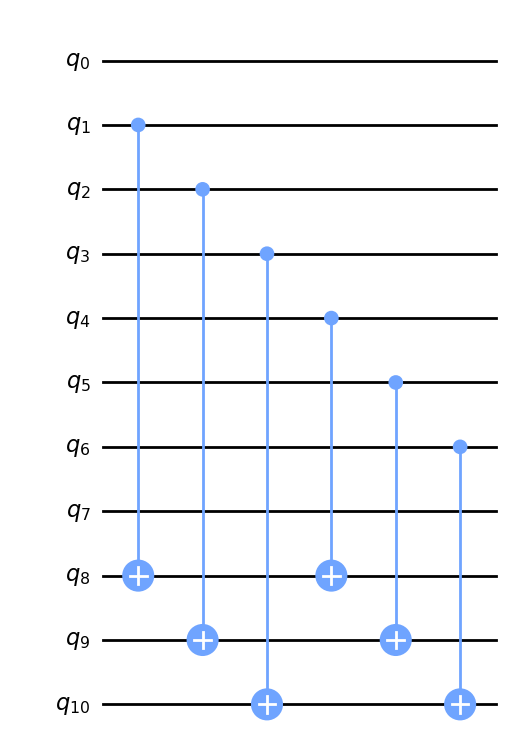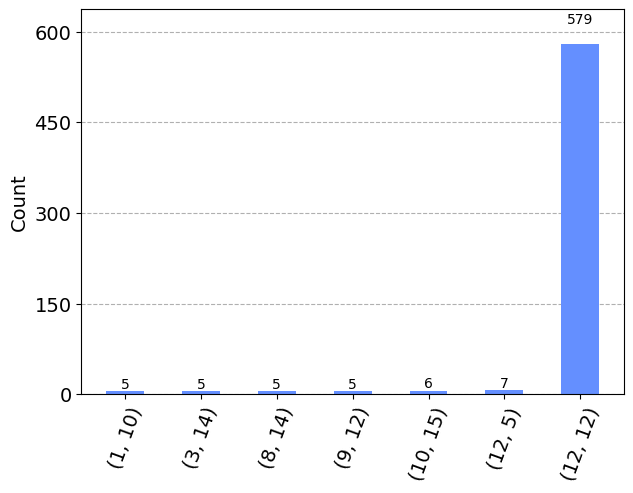Quantum Computing on Arduino
Traditionally, creating quantum circuits requires specialized knowledge in quantum programming. This requirement holds true when encoding a classical algorithm inside a quantum circuit, for instance, for an oracle or a black-box component of a quantum algorithm. This often becomes a time wasting job, since we almost always already have a classical implementation in a traditional high level language.

Qlasskit, an open-source Python library developed with the support of a Unitary Fund microgrant, addresses this challenge head-on by allowing direct translation of standard Python code into invertible quantum circuits without any modification to the original code. Furthermore, qlasskit implements some well-known quantum algorithms and offers a comprehensive interface for implementing new ones.
To illustrate qlasskit’s capabilities, we will demonstrate its use in performing a pre-image attack on a cryptographic hash function using Grover’s search algorithm, obtaining a quadratic speedup compared to classical approaches. The beauty of qlasskit lies in its simplicity – you can write the entire software without needing to understand any concept of quantum computing.
A pre-image attack, in cryptography, targets a hash function h(m) with the aim to discover an original message m that corresponds to a specific hash value. On a traditional computer, to perform this attack without any hints, we must run h(m) with every possible input (N=2**n).
Thanks to the Grover search algorithm, we are able to find a pre-image with only pi/2 * sqrt(N) iterations, obtaining the quadratic speedup I mentioned before.
We write a toy hash function hash_simp which operates on messages composed of two 4 bit values and uses bitwise xor to create an 8 bit hash value.
from qlasskit import qlassf, Qint4, Qint8, Qlist
@qlassf
def hash_simp(m: Qlist[Qint4, 2]) -> Qint8:
hv = 0
for i in m:
hv = ((hv << 4) ^ (hv >> 1) ^ i) & 0xff
return hv
The first things you can notice in this code are:
qlassf decorators, indicating that the function will be translated to a quantum circuit.To see the resulting quantum circuit we can export and draw in qiskit:
hash_simp.export('qiskit').draw('mpl')
And this is the resulting circuit, produced by the qlasskit internal compiler:

Thanks to the fact that qlasskit function are standard Python functions, we can call the original_f to perform some kind of analysis and test on the hash function. Since the input space is tiny (it is a toy hash function), we can check if the hash function is uniform (if it maps equally to the output space).
from collections import Counter
d = Counter(hex(hash_simp.original_f((x, y))) for x in range(2**4) for y in range(2**4))
print('Hash function output space:', len(d))

We got that hash_simp is following an uniform distribution.
Now we use our quantum function as an oracle for a Grover search, in order to find which input maps to the value 0xca.
from qlasskit.algorithms import Grover
q_algo = Grover(hash_simp, Qint8(0xca))
Then we use our preferred framework and simulator for sampling the result; this is an example using qiskit with aer_simulator.
from qiskit import Aer, QuantumCircuit, transpile
from qiskit.visualization import plot_histogram
qc = q_algo.export('qiskit')
qc.measure_all()
simulator = Aer.get_backend("aer_simulator")
circ = transpile(qc, simulator)
result = simulator.run(circ).result()
counts = result.get_counts(circ)
counts_readable = q_algo.decode_counts(counts, discard_lower=5)
plot_histogram(counts_readable)
And this is the result of the simulation, where we can see that the pre-image that leads to h(x) = 0xca is the list [12,12].

Using QlassF.original_f we can double check the result without invoking a quantum simulator; calling it with the list [12,12] must result in the hash value 0xca.
print(hex(hash_simp.original_f((12,12))))

Although qlasskit can handle hundreds of qubits, in this post we use a toy hash function because currently, we lack a simulator or quantum computer capable of handling hundreds of qubits. Using these same tools, in the near future we may be able to perform a Grover search on real hash functions like md5 or sha2.
A special thanks to the Unitary Fund that funded this idea. If you have any questions or comments, feel free to reach out to me on twitter dagide, linkedin Davide Gessa and medium @dakk.
Original post on Unitary.fund: https://unitary.fund/posts/2023_qlasskit/
Useful Links:
During my Quantum Computing journey, I often needed to simulate some quantum circuits; sometimes they are small, but some other times they are bigger enough ...
Despite it is sold as a non-cartographic handled GPS device, with limited storage capacity of 10 MB and the inability to expand it, the eTrex 10 GPS, like al...
Since the latest v0.1.18 version, the Qlasskit library offers two useful tool for circuit analysis and optimization.
In the last release of Qlasskit, I introduced a new feature able to export a qlassf function to a binary quadratic model (as bqm, qubo or ising model). This...
In early 2023, I embarked on a journey to explore the field of probabilistic computing. This endeavor culminated in the construction of a hardware prototype,...
Today, I’m going to show you how to use Qlasskit to create a quantum circuit able to search for Sudoku puzzle solutions.
In a recent article I wrote, “Quantum Computing on a Commodore 64 in 200 Lines of BASIC”, published both on Medium and Hackaday.com, shows a two-qubit quantu...
Traditionally, creating quantum circuits requires specialized knowledge in quantum programming. This requirement holds true when encoding a classical algorit...
In an age where companies are selling two-qubit quantum computers for a sum of money that would make your wallet recoil in horror, here we are, stepping off ...
This June I emerged as one of the top participants with 9 bounties collected (alongside another exceptional contributor) in the #UnitaryHack Hackathon, hoste...
A few days ago I came across a yt video discussing the ESA Copernicus program, a European initiative for monitoring earth via a satellite constellation. This...
Qiskit is a python SDK developed by IBM and allows everyone to create quantum circuits, simulate them locally and also run the quantum circuit on a real quan...
As someone noticed from the previous post, last weeks I started to write a new programming language for Tezos smart contracts. This project was initially int...
While writing a new programming language, it is often useful to write some real use-cases to test the syntax, the language expressiveness and the code cleann...
Documentation is like sex: when it is good, it is very, very good; and when it is bad, it is better than nothing
This is my new blog, based on jekyll. I’ll soon import old posts from my old blog.
Contractvm is a general-purpose decentralized framework based on blockchain. The framework allows to implement arbitrary decentralized applications in an eas...
Most of bitcoin dice software use a system to prove the fair play of the server for each bet. Most of them implement this mechanism using two seed (server se...
In the aim to merge two of my server on digitalocean, today I tried to write a mod_rewrite rule to redirect a secondary domain to a subfolder. After one hour...
MineML is a multithread CPU based bitcoin miner written in F#. At the moment it’s a slow implementation, but the class structure offers the possibility to im...